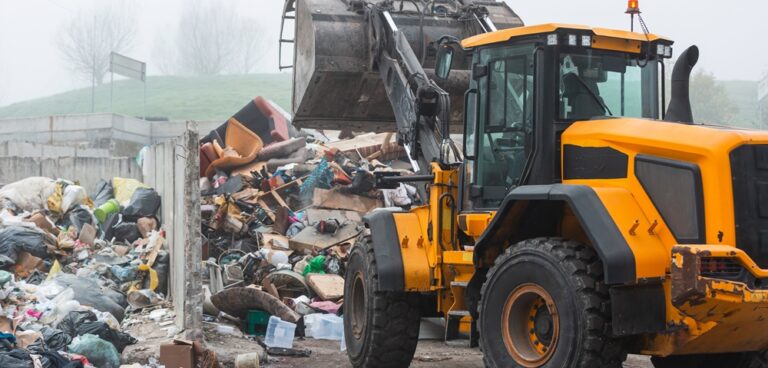 Increasing consumer demand dictates that the research and development of new more innovative materials and products is a constant requirement, but what exactly is being done to monitor the recycling of that material when it becomes a waste product? In this article, Julian Tranter, managing director of waste management specialist Tom White, speaks to SME Today to question the current legislation loophole and also asks why more isn’t being done to tax the companies that import products, all of which leaves material recycling facilities (MRFs) footing the bill.
Increasing consumer demand dictates that the research and development of new more innovative materials and products is a constant requirement, but what exactly is being done to monitor the recycling of that material when it becomes a waste product? In this article, Julian Tranter, managing director of waste management specialist Tom White, speaks to SME Today to question the current legislation loophole and also asks why more isn’t being done to tax the companies that import products, all of which leaves material recycling facilities (MRFs) footing the bill.
It’s great to see diverse research and development being undertaken to produce innovative and exciting new materials and products intended to improve our lives. But all materials and products, even new ones, have a life cycle. Work has definitely been done to consider environmental and sustainable solutions at the end of life-cycle, but realistically this is just not sufficient.
My frustration is that too often the recycling of these new products is not fully considered by the research and development team. It becomes someone else’s issue down the line when it falls into the hands of a Material Recycling Facility (MRF), such as Tom White. The MRF then has to ‘foot the bill’ to process the material or product safely and securely. Clearly this needs to change!
It’s vital that research and development teams are compelled to design the recycling and circularity of their new materials and products from the outset. For it to work it needs to form part of any funding or tax benefit process and supported by best practice guidelines or legislation.
Design with recycling in mind
Thinking outside the box and approaching the material design process with recyclability and circularity in mind from the outset should be a key priority for design teams, producers and manufacturers. Let’s be clear – complex products featuring multiple material types, lamination and other hard-to-recycle elements are much more likely to end up in general waste streams than simple, effective solutions that make it easier to recycle, convert to product and get back into the UK supply chain to reduce the burden on virgin stocks.
But for that to become a reality we need to incentivise producers to design their products with recycling and circularity in mind from the outset, perhaps through updated Government legislation. By closing the current loophole that leaves MRFs responsible producer mindsets will quickly change.
Eco modulated fees can help
Some people would argue extended producer responsibility (EPR) does put some requirements on producers of packaging materials, but in my opinion it certainly doesn’t go far enough in terms of addressing wider material selection in the research and development phase and the lifecycle management of that product. That’s what I believe is key to making a difference.
Eco-modulation is technically already part of EPR, but could provide a better way of bridging the gap if it was pushed more stringently. This is the concept of penalising the use of material selection that is perceived to be environmentally harmful, while rewarding the use of those which are better for the environment (i.e. more recyclable).
Correctly implementing fee modulation has the potential to greatly expedite the transition to a circular economy. In sectors such as textiles, where EPR is not yet widely adopted, we should encourage environmentally conscious manufacturers to advocate for its implementation by Government.
While companies are generally willing to enhance their environmental practices, they must also maintain competitiveness. Well-designed EPR with fee modulation can effectively prevent brand cross-subsidisation and offer appropriate incentives to drive continuous innovation in design.
Imported materials are a huge issue
But it is not simply those materials and products designed and manufactured in the UK. Materials and products developed abroad do not necessarily have the same EPR restrictions that are applied in the UK. Therefore, an unrecyclable product can be developed abroad, imported to the UK and then when it ends up at the MRF, it becomes our responsibility to deal with it – this really does need re-thinking.
One proposal is that I think could work, at least short term, is adding greater levels of import duty or tax to imported materials that cannot be returned to the UK supply chain, to avoid them ending in UK landfill. Such a fiscal driver would have the potential to improve product and material sustainability. This additional cost would inevitably encourage businesses to look at UK alternatives, boosting our economy, or at least demanding that the international producer looks more closely at the materials selection at the research phase to ensure recyclability and circularity.
Finding value for all
As extended producer responsibility (EPR) reform continues to bubble in the background, I personally want to see greater action when it comes to designing circularity, recycling responsibility placed on businesses for the research and development of new materials and products, as well ask Government(s) to specifically review the taxation and duty on imported products.
They need to listen to the concerns and advice offered by experienced businesses from across the supply chain and must take it on board to ensure that legislation is fair and effective for all involved. At the moment that is not the case. Collaboration is key to achieving a system that is not only successful but beneficial to all.

